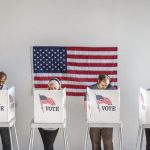
Nicholas Anthony
Late last year, the Federal Reserve caught attention for its central bank digital currency (CBDC) pilot projects. Going beyond traditional research, the Federal Reserve contracted with the private sector to build potential CBDCs for the United States. As American Banker’s John Adams reported at the time, “Even as debate in the U.S. rages over the utility of a digital dollar, work continues on the nuts and bolts of a potential American CBDC.”
Therefore, with concerns about the risks of CBDCs high and the potential for such CBDC development to go awry, Representative Alex X. Mooney (R‑WV) introduced a bill to rein in the Federal Reserve’s discretion.
The Digital Dollar Pilot Prevention Act, or DDP Prevention Act, would establish that the Federal Reserve would need explicit congressional authority to set up a CBDC pilot on its own or through a private sector contractor. The bill covers both the Federal Reserve board which would ultimately lead the charge on issuing a CBDC as well as the regional Federal Reserve banks that have thus far been conducting CBDC pilots. With that in mind, Representative Mooney’s bill would help to stop a CBDC pilot from being quietly transitioned to the masses.
The Federal Reserve recently tempered some of its public statements on CBDCs, but one doesn’t need to look far to see where other statements have given reason to be concerned. For example, former vice‐chair Lael Brainard testified before Congress in 2022 that developing a CBDC may take five years. While serving this warning, Brainard attempted to make the case that the United States should create a CBDC now because it might be needed in the future:
It’s really the future states of the financial system that we should be thinking about as we think about the costs and benefits [of a CBDC.] … What is really important is that it takes a long time if, for instance, Congress decides that it is very important for the Federal Reserve to issue a [CBDC]. It could take five years to put in place the requisite security features [and] design features.
While this type of argument is less than compelling, it could help explain why the Federal Reserve has been developing potential CBDCs through pilot programs. If the Federal Reserve sees its authority to issue a CBDC as questionable, then developing one unofficially might be the next best thing in its eyes. Unofficial development through pilots, for instance, could mean that a CBDC would be ready to go if Congress gives the green light. However, it would also mean that a CBDC would be ready and could be launched alongside a flurry of other programs once a crisis occurs.
While research is important, there’s a fine line between lab experiments and operating a venture capitalist incubator for tech startups and financial institutions to get their CBDC models off the ground. More so, there’s a fine line between conducting internal research and conducting pilots where the broader public is used for experiments.
With all these factors in mind, it is easy to see why Representative Mooney is concerned about the Federal Reserve’s actions on CBDCs.








